Understanding DACs in iPhones: A Comprehensive Guide
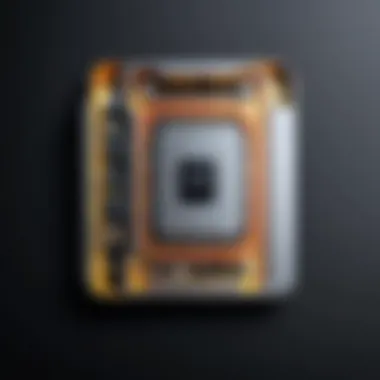

Intro
Digital to analog converters (DACs) are vital components in modern devices, especially in iPhones. They bridge the gap between digital audio signals and the analog world, delivering sound that can be heard through speakers and headphones. Understanding the role of DACs in iPhones helps consumers appreciate the intricacies of their devices. This article analyses how these components work, their impact on audio quality, differences across various iPhone models, and future trends in DAC technology.
Overview of the Technology
DACs serve a critical function in audio playback, converting binary data into continuous waveform signals that speakers can interpret. In iPhones, the DAC is responsible for processing digital audio files and ensuring the sound output retains its quality.
Key specifications
The specifications of DACs can vary across different iPhone models. Factors such as sample rate and bit depth dictate the range of audio quality. Higher sample rates can produce clearer sound, while increased bit depth allows for a more nuanced representation of audio dynamics.
- Sample Rate: This indicates how many times per second an audio signal is sampled. Common rates in iPhones often reach up to 96 kHz.
- Bit Depth: This reflects the accuracy of each audio sample. A typical range in high-quality DACs is 16-bit to 24-bit.
These specifications influence the listening experience, as they determine the fidelity of the sound being produced.
Unique selling points
One of the unique selling points of iPhone DACs is their integration with sophisticated digital signal processing (DSP) algorithms. These algorithms enhance sound quality and provide various audio profiles designed for different listening environments.
- Spatial Audio: This feature enhances the perception of sound sources, adding depth and realism.
- High-Resolution Audio Support: iPhones support high-resolution audio formats, transcending typical limits of digital music.
Such features signify Apple's commitment to delivering superior audio experiences and set its products apart in a competitive market.
Design and Build Quality
The design and build quality of the DACs in iPhones also contribute to performance. Although a tiny component, the engineering involved reflects Apple's attention to detail.
Material used
High-grade materials are utilized to ensure durability and optimal performance. This guarantees that the DAC can withstand the rigors of daily use while delivering excellent audio quality. The interaction of the DAC with the overall design of the iPhone helps to minimize noise and interference.
Ergonomics and usability
User experience plays a significant role in the design consideration of DACs in iPhones. The layout ensures compatibility with Lightning connectors and promotes seamless integration with audio accessories like AirPods or other headphones. Such ergonomic design choices enhance usability and make it easier for users to connect their audio devices without compromising sound quality.
"Understanding the technology behind DACs allows users to optimize their listening experience and truly appreciate their audio devices."
Finale
In summary, digital to analog converters in iPhones hold significant importance in audio processing. The unique specifications and design choices lead to high-quality sound output, resulting in an enhanced audio experience. As technology evolves, consumers can expect improvements in DAC performance to continue shaping the future of digital audio.
Foreword to Digital to Analog Converters
Digital to Analog Converters, commonly known as DACs, play a crucial role in our modern electronic devices, especially in smartphones like the iPhone. As digital audio has become the norm, understanding the function and significance of DACs cannot be overstated. In this article, we will delve into how DACs work, their importance, and their impact on the audio experience within the context of iPhones. This foundational knowledge is vital for anyone looking to understand the technology that enhances our daily lives.
Definition and Functionality
DACs are electronic components that convert digital data, typically in the form of binary code, into analog signals that can be understood by human ears. When you listen to music on an iPhone, the digital audio file, say an MP3, is processed by the DAC to transform it into an electrical signal that drives the speakers or headphones. This conversion is essential since most audio playback relies on analog signals.
In practical terms, the functionality of a DAC involves several steps:
- Receiving the Digital Input: The DAC takes in digital data, which could be a string of zeros and ones representing audio information.
- Conversion Process: It processes the data by interpreting the digital codes and translates it into an analog voltage signal. Different DACs employ various methods for this conversion, and the accuracy can greatly affect sound quality.
- Outputting the Signal: Finally, the converted analog signal is sent to the audio output device, whether it is internal speakers or external devices.
Importance in Modern Technology

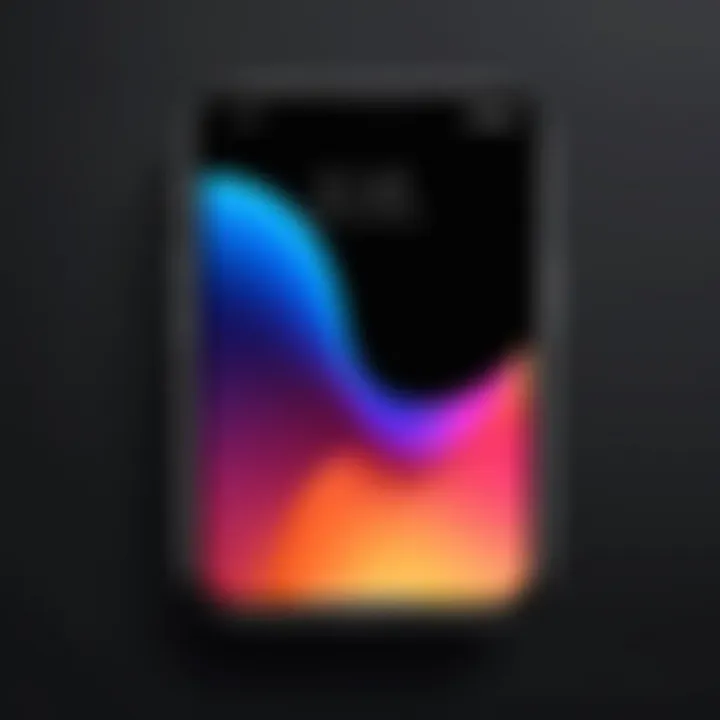
In the realm of modern technology, DACs provide significant benefits that enhance audio fidelity. With the rise of high-resolution audio formats and streaming services, the demand for high-quality sound has increased. Here's why DACs are important:
- Audio Quality: A sophisticated DAC improves the dynamic range and clarity of the sound, allowing users to hear details in a track that might otherwise be missed.
- Compatibility: As iPhones evolve, so do the audio formats they support. DACs ensure compatibility across various audio types, enabling seamless playback.
- Integration with Other Technologies: Modern DACs often integrate with other technologies such as digital signal processing (DSP), further enhancing audio quality through various adjustments and filters.
"The quality of conversion directly impacts the listening experience."
DACs in Mobile Devices
Digital to Analog Converters (DACs) play a fundamental role in mobile devices, especially in smartphones like the iPhone. These integrated circuits are crucial for converting the digital audio signals into analog form, which can then be played through speakers or headphones. In the context of iPhones, this transformation is what allows users to experience high-quality sound from their devices. As mobile technology advances, the functionality and importance of DACs become increasingly relevant.
Modern smartphones, including the iPhone, rely heavily on DACs not just for music playback but also for voice calls, gaming experiences, and interactive applications. The users expect clear sound output regardless of whether they are watching a movie, listening to music, or engaging in mobile gaming. The efficiency of the DAC determines the audio experience, affecting clarity and depth of sound.
Overview of DAC Applications
In mobile devices, DACs have a wide range of applications. They are primarily utilized for audio playback but serve several other purposes:
- Audio Playback: Converting digital audio streams from music, videos, and other multimedia files into fully audible sound.
- Voice Communication: Ensuring clarity in phone calls by converting voice signals into analog form for transmission and reception.
- Gaming Audio: Providing an immersive experience by processing complex audio signals in real-time.
- Multimedia Content: Facilitating high-quality audio for streaming services, podcasts, and audiobooks, enriching the overall user experience.
The integration of DACs in mobile devices allows manufacturers to maintain a compact design while still delivering effective audio solutions. This balance between size and performance is crucial in today’s mobile tech market, where users seek devices that are both powerful and portable.
Role in Audio Signal Processing
The audio signal processing capabilities of DACs are vital to achieving superior sound quality. DACs in iPhones not only convert digital data to analog signals but also filter and modify these signals to enhance audio quality. This includes managing factors such as noise reduction and signal integrity. Here are some key aspects of their role in audio signal processing:
- Filtering: DACs often include digital filters that improve sound quality by reducing unwanted frequencies. This helps in delivering a cleaner audio experience.
- Dynamic Range Management: The ability of a DAC to handle various levels of sound intensity provides a richer audio experience, allowing users to enjoy subtle nuances in music and soundtracks.
- Real-Time Processing: Advanced DACs can process audio signals in real-time, ensuring minimal latency. This is particularly important in applications like gaming or video calls, where timing is critical to user experience.
Through these functions, DACs enhance the audio clarity, providing a more pleasant listening experience. The significance of these elements cannot be understated, as the listener's enjoyment heavily relies on the effectiveness of the DAC in their device.
iPhone DAC Technologies
Digital to analog converters are central to the audio experience in iPhones. They play a key role in translating digital signals into analog sound, which is essential for users seeking high-quality audio. The significance of iPhone DAC technologies can be seen in their contribution to sound fidelity, user satisfaction, and overall performance.
Specific Models and Their DACs
Different iPhone models have utilized various DAC technologies over the years. For example, the iPhone 7 marked a notable shift with its removal of the headphone jack. This move pushed consumers towards digital audio formats. Apple integrated the Cirrus Logic DAC for that model, enhancing audio playback quality. The DACs in later models, like the iPhone 12 and 13, incorporated improvements aimed at delivering clearer sound and broader dynamic ranges.
The DAC in the iPhone 12, for instance, offers an advanced bit depth and sample rate, allowing for a richer listening experience. This shift highlights how Apple's focus on audio fidelity continues to evolve with each generation, reflecting a commitment to amplifying user experience through superior sound quality.
Evolution of iPhone DACs Over Time
Over the years, the evolution of iPhone DACs illustrates Apple's ongoing innovation in audio technology. The changes are not only in hardware but also in software integration that optimizes audio processing. Early iPhones may have had limited DAC capabilities, focusing primarily on basic audio playback.
As advancements in technology occurred, subsequent models introduced features like support for high-resolution audio files, noise reduction techniques, and improved signal amplification. For instance, the transition to the iPhone X brought the introduction of Apple’s proprietary processing chips, further elevating audio playback.
This trend of continual improvement ensures that users are not just consuming audio but experiencing it, with each iteration of DAC technology contributing to a more immersive sound environment.
"Investing in higher quality digital to analog converters enhances the audio output, allowing for nuances in music that can be missed by standard DACs."
In summary, the specific models and their associated DACs, as well as the evolution of these technologies within iPhones, illustrate an important aspect of consumer electronics. This ongoing development allows for better audio experiences, serving the discerning tastes of tech-savvy users.
Performance Factors of iPhone DACs
In the realm of iPhones, the performance of Digital to Analog Converters (DACs) significantly influences audio output quality. Key performance factors include bit depth, sample rate, noise floor, dynamic range, and total harmonic distortion. Understanding these elements is essential for consumers and tech enthusiasts who desire an optimal audio experience. The variances in these factors can greatly affect how audio is converted from digital formats into sound, underlining the sophistication of the devices we use daily.
Bit Depth and Sample Rate
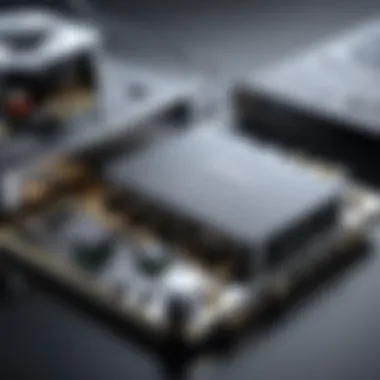
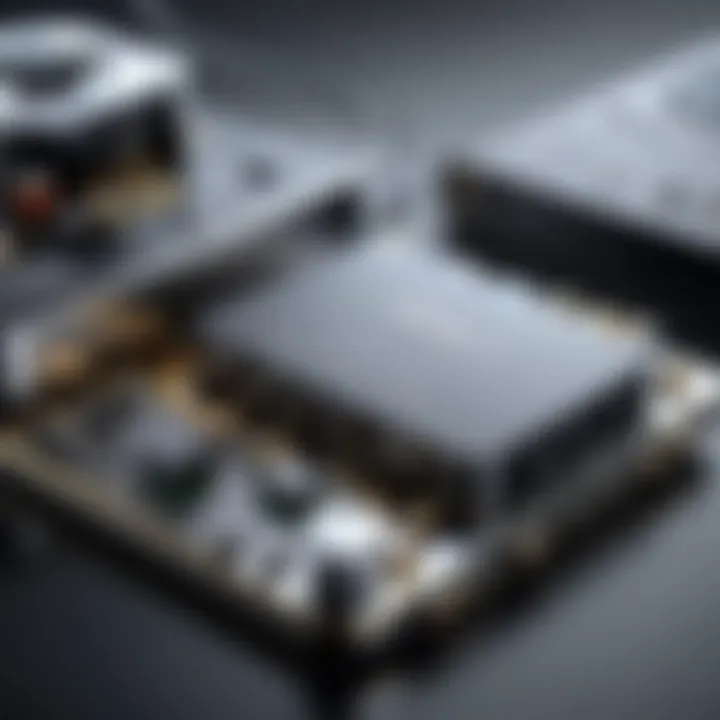
Bit depth and sample rate are foundational aspects of audio quality in DACs. Bit depth refers to the number of bits used to represent each audio sample. A higher bit depth allows for greater dynamic range, which means louder sounds can be heard without distortion, while softer sounds fall below the threshold of noise.
Sample rate defines how many samples of audio are captured or played back each second. For instance, a sample rate of 44.1 kHz is standard for CD audio, while higher rates, such as 96 kHz or 192 kHz, are increasingly common in modern playback devices.
Benefits of optimal bit depth and sample rate include:
- Improved clarity in sound reproduction.
- Reduced risk of audio distortion.
- Enhanced listening experience for high-resolution audio files.
It is notable to mention, however, that the difference in quality may not be discernible to all listeners. The nuances in sound can be subtle, but for audiophiles and professionals, these factors are crucial.
Noise Floor and Dynamic Range
The noise floor represents the level of background noise that can impact audio playback. A lower noise floor results in clearer audio, permitting faint sounds to be heard without interference. Dynamic range, on the other hand, measures the difference between the quietest and loudest sounds a system can reproduce.
A high dynamic range is essential for delivering a full audio experience, especially in complex musical arrangements.
Key considerations include:
- A lower noise floor enhances details in quiet passages of music.
- A higher dynamic range allows for more expressive playback, making the sound feel more lifelike.
Selecting an iPhone model with superior noise floor and dynamic range translates into better audio performance. This is particularly relevant when users employ high-quality headphones or external speakers.
Total Harmonic Distortion
Total Harmonic Distortion (THD) refers to the amount of harmonic distortion present in the output audio signal. THD is often expressed as a percentage; lower percentages indicate cleaner audio reproduction with less unwanted noise or alteration in the original signal.
Factors that impact THD include:
- Quality of the DAC hardware.
- Design and technological advancements in the iPhone model.
Maintaining low total harmonic distortion is crucial for audio credibility. Music lovers typically prefer devices that minimize THD, allowing for faithful reproduction of their favorite tracks. THD values are usually checked in reviews and specifications but may not always reflect real-world listening. Users should conduct personal listening tests when selecting devices based on this factor.
"The performance factors of an iPhone's DAC are vital in determining the quality of audio playback, which is key for anyone prioritizing sound clarity and reliability."
Understanding these performance factors in iPhones gives consumers insights into what to expect from their devices. The choice of configuration can directly affect listeners in multiple ways. For tech-savvy individuals, knowing how these specifications interplay can guide decisions in choosing an iPhone that aligns with their audio needs.
User Experience with iPhone DACs
The user experience with iPhone DACs encompasses various factors that contribute to how individuals perceive audio quality and overall functionality. More than just technical specifications, this experience is shaped by audio clarity, device versatility, and compatibility with various audio gear. Understanding these aspects helps users make informed decisions about their audio setups.
Impact on Audio Quality
Audio quality is primary concern for many users who enjoy music, podcasts, and other audio content on their iPhones. The DAC plays a crucial role in this context, converting digital audio signals into analog waves that can be heard through speakers or headphones. A poorly designed DAC could result in muddled sound, distortion, or a lack of clarity in high frequencies.
Several factors influence how the DAC affects audio quality. The signal-to-noise ratio is crucial in determining the clarity of the sound. iPhones utilize advanced DAC technologies that minimize noise and enhance the overall audio output. Moreover, features like high bit-depth and sample rate can improve the resolution of the audio signal, leading to a more immersive listening experience.
Additionally, specifications aside, real-world tests have shown that even small upgrades in the DAC can lead to significant differences in sound quality. This includes reproducing subtle details in recordings that might otherwise go unnoticed. Users who prioritize audio quality will often notice improvements when using higher-performance DACs.
Compatibility with Audio Accessories
Compatibility plays a crucial role in the user experience regarding iPhone DACs. As the iPhone design evolves, so too do the types of audio accessories available. High-quality headphones, for instance, can only deliver their full potential when matched with a capable DAC.
Many users prefer using external DACs to enhance audio output. When pairing an iPhone with accessories, users must consider both physical and digital compatibility.
- Physical Connections: Many devices use Lightning connectors or Bluetooth for convenience, but these methods can influence sound quality.
- Bluetooth Codec Support: Different DACs may support various codecs such as aptX or AAC, which can affect audio fidelity during wireless playback.
- Third-Party Headphones and Amps: Some accessories require advanced DACs to function optimally.
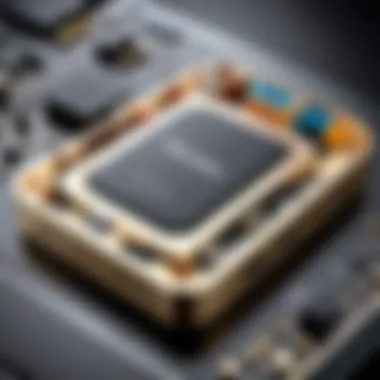
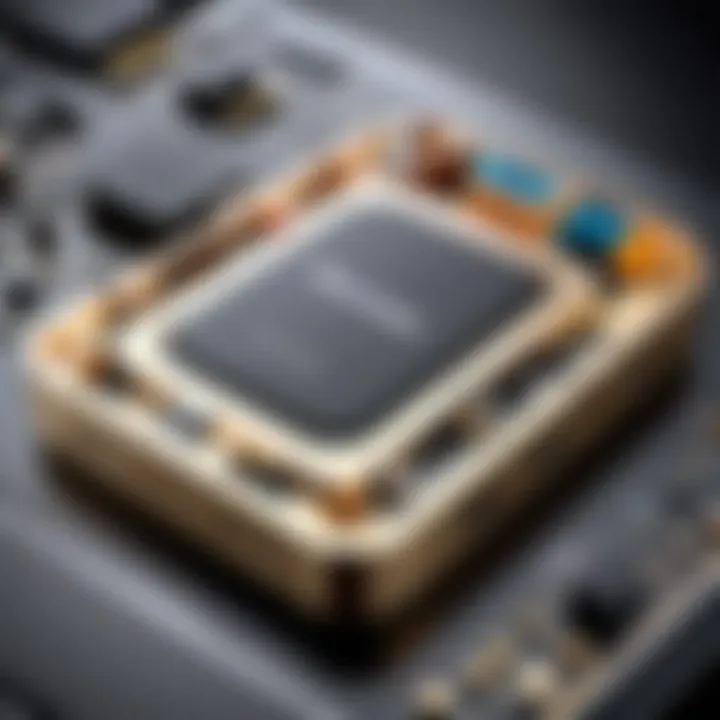
"A good DAC does not just convert audio; it transforms the listening experience into something remarkable."
In summary, understanding user experience with iPhone DACs involves considering the quality of the output and the compatibility with audio devices. Both aspects heavily influence the effectiveness and enjoyment of the audio experience.
Upgrading iPhone Audio Experience
Enhancing the audio capabilities of iPhones can significantly impact user satisfaction. Many individuals are not entirely aware of how digital to analog converters (DACs) can augment overall sound quality. Upgrading the audio experience goes beyond simply obtaining higher volume levels. It requires a careful consideration of how sound is processed and delivered.
External DACs and Their Benefits
External DACs operate independently from the internal components of the iPhone. They extract digital audio signals, converting them to analog with often superior clarity and fidelity than built-in methods. Here are some key advantages of using external DACs:
- Improved Sound Quality: External DACs often feature higher specifications, providing a clearer and more detailed listening experience.
- Versatility: Many external DACs come with various connectivity options, supporting different devices and audio formats.
- Enhanced Power Management: External DACs may have better power circuits and can run more efficiently, preserving battery life for the primary device.
- Customization: They may provide options for sound adjustment, allowing users to tailor audio settings to their preferences.
These factors make external DACs an appealing choice for audiophiles using iPhones.
Best Practices for Integration
Integrating an external DAC with an iPhone requires some knowledge to achieve optimal results. Here are steps one should consider:
- Selecting Compatible Devices: Ensure the DAC supports iPhones. Many DACs are designed to work seamlessly with iOS devices, but it is important to verify compatibility.
- Choosing the Right Connection Type: Many iPhones use a Lightning port, while others may still support a 3.5mm headphone jack. Knowing your device's connectivity type can inform your selection of an external DAC.
- Using High-Quality Cables: Invest in quality cables that minimize signal loss. This ensures the quality of audio is retained as it travels from the iPhone to the DAC.
- Adjusting Settings: Once the DAC is connected, check for any settings that can be adjusted through the DAC interface. Tailoring these settings can make a difference in audio output.
- Testing Different Audio Sources: To fully assess the enhancements, play various types of audio content. This provides insights into how the DAC performs with different soundscapes.
"Investing in an external DAC is not just a luxury; for serious listeners, it's often the recommended pathway to experience full sonic potential."
By following these practices, users can maximize the advantages of their upgrades. While built-in DACs perform admirably, the potential benefits of integrating external DACs cannot be overlooked for those who prioritize sound quality.
Future Trends in DAC Technology
Digital to analog converters (DACs) are vital in achieving superior audio quality in devices like iPhones. As technology progresses, the demand for enhanced audio experiences increases. Understanding the future trends in DAC technology is essential for consumers, audio professionals, and technologists alike.
Emerging Standards in Mobile Audio
New standards are constantly being developed to meet evolving consumer needs. For instance, the introduction of LDAC and aptX HD protocols has improved streaming quality over Bluetooth connections. These standards help DACs utilize higher bit rates for better audio fidelity, especially with wireless audio products.
The USB-C Audio standard has also gained traction, allowing for direct audio connections from various devices. This simplifies connections and optimizes the audio transfer between DACs and headphones. Additionally, ongoing work towards MQA (Master Quality Authenticated) technology aims to offer streaming at higher resolutions, respecting the original recording quality while permitting efficient file sizes.
"As we embrace more advanced mobile audio standards, DACs must be at the forefront, meeting and adapting to these listening demands."
Potential Innovations in iPhone DACs
Innovations in DAC technology are on the horizon. Companies are investing in more efficient chip designs, focusing on energy consumption and circuit integration. The goal is to create DACs that can deliver high-quality audio while preserving battery life. This is especially useful for mobile devices where power efficiency is crucial.
Additionally, the concept of integrating AI in audio processing is gaining momentum. Intelligent DACs could learn user preferences and adapt audio output based on environmental factors or specific genres of music. Moreover, advancements in multi-bit DACs stem from efforts to achieve greater precision and audio resolution.
The integration of digital signal processing (DSP) within DACs is another noteworthy trend. DSP can greatly improve sound quality by dynamically adjusting audio signals according to headphones or speakers used. As iPhone users increasingly rely on diverse audio accessories, this capability will enhance compatibility and performance significantly.
In summary, the future of DAC technology in iPhones points toward higher standards, innovative integrations, and improved efficiencies, aligning with modern user expectations. This will reshape how audio experiences are delivered and enjoyed.
Closure
Summarizing the Importance of DACs
In the context of iPhones, digital to analog converters (DACs) serve a critical role in delivering high-quality audio experiences. DACs are essential for converting digital audio signals into analog, which influences the acoustic performance of the device. The better the DAC, the clearer and richer the sound. In modern smartphones like the iPhone, the choice and quality of DACs can significantly affect user satisfaction. A high-performing DAC can make audio sound fuller, capturing subtle details that cheaper units may miss. Additionally, with streaming becoming more prevalent, a superior DAC ensures that high-resolution audio tracks are reproduced accurately.
Moreover, on a technical level, DACs contribute to minimizing distortion and enhancing dynamic range. This is vital for audio enthusiasts who demand clarity and fidelity. In this sense, understanding DACs allows consumers to appreciate the technology behind their devices more fully, leading to informed decisions when upgrading audio experiences.
Final Thoughts for Consumers
For consumers, the implications of DAC technology go beyond the mere act of listening. Recognizing the significance of DACs can guide choices when selecting accessories or upgrading audio capabilities. If a user wishes to connect high-quality headphones or speakers to an iPhone, the DAC's quality becomes a primary consideration.
Upgrading to an external DAC can significantly enhance audio performance. Brands like AudioQuest and FiiO offer portable DACs that cater to audiophiles seeking better sound without sacrificing mobility. Proper integration of such devices can unlock a new level of audio quality that internal DACs may not achieve alone.







